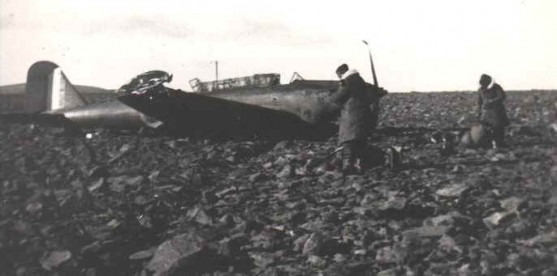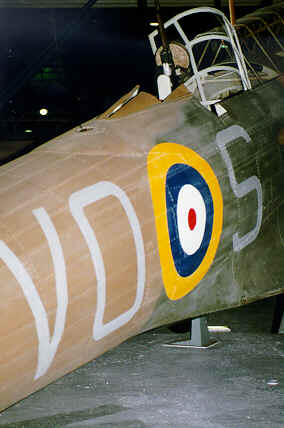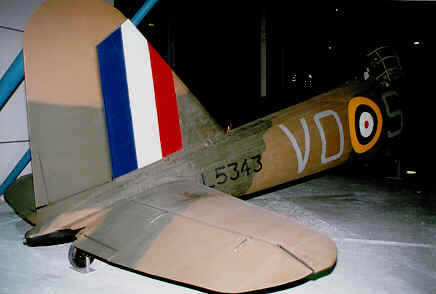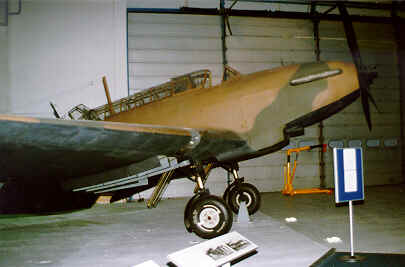A history of Fairey Battle L5343
by Ragnar J. Ragnarsson
”My” Battle
I was a member of the team that salvaged L5343 from the interior of Iceland in 1972, where she’d been laying since 13 September 1940 when she made a forced-landing on account of an engine failure. Being an avid modeler at the time (and co-founder of IPMS Iceland, I might add) I made detailed notes (and photos) of the aircraft’s markings before she was taken apart for shipment to the U.K.
Only recently I came across IPMS Stockholm’s in Detail feature about Fairey Battle in RAF Hendon Museum. In this article, I’d like to provide some more details about this particular aircraft.
The history
L5343 was one of 1029 Battles built by Austin Motors at the company’s Longbridge plant. The plane was fitted with a Merlin III engine and on 9 September 1939 allocated to No. 24 MU (Maintenance Unit) at Stoke Heath where it was placed in reserve for Bomber Command.
On 9 December 1939, L5343 was allocated to the newly-formed No. 266 (Fighter) squadron at Sutton Bridge and used for training during the squadron’s work-up pending the arrival of Spitfires. It was returned to No. 20 MU at Aston Down on 24 February 1940 where it remained until 13 July 1940 when allocated to No. 98 Squadron, in the process of reforming after returning from France.
On its return from France, 98 Squadron assembled at Gatwick in mid-June 1940, after being struck a severe blow when a large number of its ground crew were lost in the sinking of the Lancastria. At first the intention was to disband the squadron, but on 12 July orders were received for the squadron to move to Iceland for anti-invasion operations in support of British forces which on 10 May 1940 had occupied the island. Eighteen Battles were delivered from Maintenance Units over the next five days, including L5343 on 13 July.
On 26 July the squadron left Gatwick on the first stage of its flight to Kaldadarnes, Iceland, a hastily prepared landing ground on the bank of the river Ölfusá, about 40 km southeast of Reykjavik. At the controls of L5343 was W/Cdr. G.R. Ashton, AFC, the squadron’s Commanding Officer. After a brief layover at RAF Newton where the Battles were serviced and their compasses swung, the squadron proceeded to Wick, Scotland, where L5343 landed on 2 August after spening a night at RAF Montrose due to weather.
On account of the Battles’ limited range the squadron was held up at Wick several weeks awaiting favourable weather for the crossing to Iceland and it was not until 27 August that the first section of 9 Battles led by W/Cdr. Ashton in L5343 took off for Iceland escorted by two Sunderlands. Five hours and twenty minutes later they all landed safely at Kaldadarnes, L5343 thereby allegedly becoming the first RAF aircraft to set its wheels on Icelandic soil. The rest of the squadron’s Battles joined those already in Iceland on 14 September.
No record exists of the flights L5343 made after its arrival in Iceland except for its final one – on 13 September 1940 when F/Lt. H.C.G. Wilcox, RCAF took off from Kaldadarnes to transport a army colonel to Akureyri on Iceland’s north coast. Unable to reach its destination on account of low cloud cover, the aircraft was returning to Kaldadarnes when its engine failed near the geographical center of Iceland. F/Lt. Wilcox carried out a successful forced landing on boulder-strewn terrain a short distance south of the Hosjökull glacier, and although the aircraft sustained considerable damage in the landing, both its occupants survived the crash with F/Lt. Wilcox receiving only minor injury. After a two-day trek through the wilderness of Iceland in cold and unpleasant weather, Wilcox and his passenger were met by a rescue team and brought to safety (F/Lt. Wilcox later became 98 Squadron’s Commanding Officer). Shortly after the crash a salvage team was sent to the site to remove guns, radios and other equipment from the wreck, after which fire was set to the airframe which destroyed much of the fuselage.

This photograph of L5343 is beleived to be taken shortly after the forced landing by the salvage team. The removed equipment can be seen by the two men in the foreground. Photo: Ragnar J. Ragnarsson coll.
Salvage and restoration
In the summer of 1972 the RAF embarked on a successful recovery operation to salvage what still remained of L5343 and bring it back to the U.K. for restoration. The restoration team did a superb job and L5343 is now proudly displayed at the RAF Museum at Hendon. An excellent account of the recovery operation and L5343’s subsequent restoration by the recovery team’s Engineering Officer, Len Woodgate, appeared in the February 1995 issue of FlyPast.
I was fortunate enough to be a member of the team that salvaged L5343 from the interior of Iceland. Being an avid scale modeler at the time, I made detailed notes of L5343’s camouflage and markings before the wreckage was taken apart for shipment to the U.K. The following description of L5343’s camouflage and markings is based on these notes and photographs of the aircraft taken shortly after the the forced landing.
L5343 from the interior of Iceland. Being an avid scale modeler at the time, I made detailed notes of L5343’s camouflage and markings before the wreckage was taken apart for shipment to the U.K. The following description of L5343’s camouflage and markings is based on these notes and photographs of the aircraft taken shortly after the the forced landing.
The camouflage of L5343
Knowing how serious scale modelers are about the accuracy of markings and other details of the aircraft they are modeling, I felt I must inform you that the markings of L5343 as she is displayed at the RAF Museum in Hendon are not correct. Where the museum got the idea for these markings, I don’t know, but they definitely are wrong.
L5343 carried standard day bomber camouflage for the period; Dark Earth / Dark Green upper surfaces and black under surfaces. Contrary to the markings in which L5343 is displayed today at Hendon, she carried no squadron or aircraft code letters on the fuselage at the time of her forced landing (nor were they applied on any other Battles of 98 squadron to the best of my knowledge before possibly late spring 1941). The only identification marking carried on the fuselage was the serial number L5343 (31×88 cm). Roundels were B-type on wing upper surfaces, A-type on wing lower surfaces and A.1-type on both sides of the fuselage. Fin flashes were the non-standarized type for the period and varied in with from one aircraft to another within the squadron. The ones on L5343 were approx. 70 cm wide, considerably narrower than the ones painted on the aircraft today.

These photos of the restored aircraft show the incorrect markings applied by the museum. Photo: Martin Waligorski
Thirty-two years of weathering exposed evidence of previous markings that had been applied to L5343. The B-type roundels on the upper wing surfaces had replaced earlier A.1-type roundels by applying camouflage colours over the yellow circle of the A.1-type roundel. Evidence was also found that the aircraft’s serial number had at one time been carried on the rudder, common on Battles earlier. Finally, evidence was found of large pre-war white serial numbers (L5343) on the both lower mainplanes.
This article was originally published in IPMS Stockholm Magazine in December 1999
